Day 2 :
- Medicinal & Aromatic Plants
Botanical medicines for prevention and treatment
Herbal Therapies for Prevention and Treatment
Session Introduction
Arunabha Ray
University of Delhi, India
Title: Adaptogenic effects of some medicinal plants: Integration of traditional and modern concepts
Time : 10:00-10:20

Biography:
Arunabha Ray holds an MD and a PhD and is the Chair, Department of Pharmacology at the Vallabhbhai Patel Chest Institute, Faculty of Medicine, University of Delhi. He has more than 36 years teaching and research experience in basic and clinical pharmacology and toxicology and has been the recipient of several awards and honors for research excellence. He has more than 150 research publications, is Author of several text and reference book chapters, Editor of 04 books in his areas of expertise, and Author of a textbook in pharmacology.
Abstract:
Stress related disorders contribute to a significant proportion of global illnesses and adaptogens are herbal agents which have the potential to attenuate stress effects. Since its inception, the concept of adaptogens has evolved considerably and newer mechanisms have been proposed. As these agents have to be administered for a reasonably long period of time, the benefit versus risk ratio is important and herbal agents are definitely preferable over their synthetic counterparts. The brain, HPA axis and immune system play a crucial role in the expression of the stress response and studies were conducted to evaluate the possible interactive mechanisms in the adaptogenic effects of some herbal agents. The role of CNS-neuroendocrine-immune interactions during the adaptogenic effects of agents like Ocimum sanctum (Tulasi, OS), Azadirachta indica (Neem, AI) and Withania somnifera (Ashwagandha, WS), used in traditional medicine, were investigated in experimental animals. Restraint Stress (RS) was used as the experimental stressor, and the effects of RS and their modulation by OS, AI and WS extracts were assessed in albino rats. RS suppressed neurobehavioral (elevated plus maze test), endocrinal (plasma corticosterone) and immune (humoral and cell mediated) responses – effects that were differentially reversed by OS, AI and WS pre-treatments. Herb-drug interaction studies showed that endogenous neuromodulatory substances could be involved in the observed adaptogenic effects. Such interactive studies are of great significance for the convergence of traditional and modern medicinal concepts and for the development of newer, more effective and safer herbal agents for the treatment of stress related disorders.
Azza Hafez elmedany
Alexandria University, Egypt
Title: Green tea extract: Its potential protective effect on Bleomycin induced lung injuries in rats
Time : 10:20-10:40

Biography:
Azza El-Medany has completed her PhD at age of 32 years from Alexandria University and postdoctoral studies from Alexandria University College of Medicine. She is a Prof. of pharmacology &Vice head of department of pharmacology, College of Medicine , KSU. She published more than 40 papers in the areas of GIT, CVS, Natural products & toxicological researches in reputed journals and serving as a memberships of a number of Professional Bodies, was a speaker in a number of international conferences, the last ones in Singapore , Japan , Brazil & USA . She is a recipient of special awards in scientific research & teaching.
Abstract:
Lung fibrosis is a common side effect of the chemotherapeutic agent, bleomycin. Current evidence suggests that reactive oxygen species may play a key role in the development of lung fibrosis. The present work studied the effect of green tea extract on bleomycin–induced lung fibrosis in rats. Animals were divided into three groups: (1) Saline control group; (2) bleomycin group in which rats were injected with bleomycin (15mg/kg,i.p.) three times a week for four weeks; (3) bleomycin and green tea group in which green tea extract was given to rats (100mg/kg/day, p.o) a week prior to bleomycin and daily during bleomycin injections for 4 weeks until the end of the experiment. Bleomycin–induced pulmonary injury and lung fibrosis that was indicated by increased lung hydroxyproline content, elevated nitric oxide synthase, myeoloperoxidase (MPO), platelet activating factor (PAF), tumor necrosis factor α (TNF_α ), transforming growth factor 1β ( TGF1β ) and angiotensin converting enzyme (ACE) activity in lung tissues. On the other hand, bleomycin induced a reduction in reduced glutathione concentration (GSH). Moreover, bleomycin resulted in a severe histological changes in lung tissues revealed as lymphocytes and neutrophils infiltration, increased collagen deposition and fibrosis. Co-administration of bleomycin and green tea extract reduced bleomycin–induced lung injury as evaluated by the significant reduction in hydroxyproline content, nitric oxide synthase activity, levels of MPO, PAF & TNF-α & ACE in lung tissues. Furthermore. green tea extract ameliorated bleomycin– induced reduction in GSH concentration. Finally, histological evidences supported the ability of green tea extract to attenuate bleomycin–induced lung fibrosis and consolidation. Thus, the finding of the present study provide that green tea may serve as a novel target for potential therapeutic treatment of lung fibrosis.
Kavita Gulati
University of Delhi, India
Title: Translational research and herbal drug development: An experience with bronchial asthma
Time : 10:40-11:00

Biography:
Kavita Gulati holds a PhD and is a Professor in the Department of Pharmacology at the Vallabhbhai Patel Chest Institute, University of Delhi. She has more than 25 years teaching and research experience in basic and clinical pharmacology and herbal drugs and has been the recipient of several awards and honors for research excellence. She has more than 80 research publications, is Author of several text and reference book chapters, Co-Editor of 4 books in pharmacology.
Abstract:
Herbal drugs are emerging as viable alternatives for complex disease states and modern scientific methodology are being adopted to validate the effects of such agents used in the traditional systems of medicine. Translational research in medicine is a two-way street and aims at breaking down barriers between clinical and basic medical sciences to promote rapid transfer of knowledge from bench to bedside and vice versa. In pharmacological sciences and drug development, this concept is being utilized for accelerating the conversion of basic and/or clinical research findings to sustainable health care solutions. Bronchial asthma is a chronic inflammatory respiratory disorder with steroid dependent pharmacotherapy and the use of herbal agents is being explored in search of viable alternatives. UNIM-352 is a poly-herbal formulation, used in traditional medicine for bronchial asthma, and clinical and experimental studies were conducted to validate their observed effects. In the clinical study, UNIM-352 significantly enhanced the therapeutic effect of standard anti-asthma therapy as assessed lung function tests and symptomatology, as compared to the placebo group, indicating its efficacy as an adjunct therapy. In the experimental study, UNIM-352 demonstrated differential degrees of anti-inflammatory, immune-modulatory, broncho-relaxant, anti-remodeling, and antioxidant effects in rats, by using well established biomarkers for the above pathophysiological states. The results indicate that this poly-herbal agent could be used as an alternative/adjunct in the treatment of bronchial asthma. This study also highlights the importance of a translational approach in herbal drug research which could rationalize drug therapy of complex diseases.
Manoshi Baruah Deka
Assam Agricultural University, India
Title: Indigenous knowledge in treatment of common health problems
Time : 11:20-11:40

Biography:
Manoshi Baruah Deka is the Principal Scientist and Head, Department of Extension and Communication Management, Assam Agricultural University with 34 years of experience. She graduated from Assam Agricultural University, Jorhat and completed Doctoral studies from Punjab Agricultural University. She worked as a Technical Coordinator of Extension Education under AICRP on Home Science for 10 years, involved in planning, implementing, monitoring different research projects, compiling and reporting of data from nine AICRP centers across India. She presented invited and contributory research papers in international, national, regional seminars and conferences; and published papers in journals, chapters in books, extension bulletins. She is a Life Member of 12 professional societies.
Abstract:
The indigenous knowledge is diversified, location specific, ecologically relevant and user friendly which gets passed on from generation to generation through word of mouth. The rural people of Assam, India, are using this traditional knowledge to treat different health ailments and nurture the practices even today. Keeping this in mind a study on ‘Indigenous knowledge used in the treatment of common health problems’ was conducted in four districts of Assam namely Jorhat, Nagaon, Silchar and Kamrup. The relevant information was recorded using participatory interview, key informant interview and focused group discussion. The study revealed that Curcuma longa, Cenetella asiatica, Clitoria ternatea, Aegle marmelos, Citrus aurantifolia, Aloe vera, Leucas linifoliaetc etc are used in different forms to treat the common health problems such as wounds and cuts, inflammations, ringworm, diarrhoea, constipation, fever, cold and cough, loss of appetite, nausea, conjunctivitis, skin problems etc . Scientific validation of identified knowledge was done through study of relevant literature and discussion with experts of the line departments such as herbal medicine practitioner, Ayurvedic doctor and ethno botanist . A list of plants with their local names, pharmacognosy and pharmacological and pharmaceutical status has been reported in the present study which needs further assessment of actual ingredients.
Luiz Filipe Gonçalves de Oliveira
Laboratory of Molecular Biology and Endemic Diseases, Brazil
Title: Phytotherapy - a new and innovative perspective for leishmaniasis treatment
Time : 11:40-12:00

Biography:
Luiz Filipe Oliveira is pharmacist since 2002 and obtained his master's degree in 2010, by the National Institute of Infectious Disease of the Fundação Oswaldo Cruz in the field of clinical research in infectious diseases. Currently, he is a PhD student in Parasite Biology’s (focus on genetics and biochemistry) at the Fundação Oswaldo Cruz and is developing a research with plant extracts with antileishmanial activity, studying molecules and active fractions for the development herbal medicines and other natural product formulations.
Abstract:
Leishmaniasis is classified as one of the neglected tropical diseases, affecting mainly people in developing countries and requiring the development of novel drugs for treatment. This infection is caused by several species of the genus Leishmania, can be transmitted to humans and other mammals during the bloodmeal of phlebotomine insects and may present a large array of distinct clinical symptoms. Therefore, leishmaniases are usually classified into three main clinical categories, according to the parasite tropism: cutaneous leishmaniasis, mucocutaneous leishmaniasis and visceral leishmaniasis. The drug of choice for all clinical forms of leishmaniasis have been, for the past 60 years, the pentavalent antimonials, in spite of a large variety of adverse side effects related to its use, including cardiotoxicity. Amphotericin B and pentamidine are considered the second line of the treatment as they present even greater toxicity during treatment. In the last twenty years, the activity of medicinal plants against Leishmania spp have been widely studied and thoroughly confirmed. Among the plants proven to possess antileishmanial properties, we can cite: Kalanchoe pinnata, Plumbago scandens, Physalis angulata, Piper aduncum, Tabernaemontana (Peschiera) australis, Phyllanthus amarus, Artemisia annua and Tabeluia sp., as well as their derivate compounds. The objective of the present study is to highlight the advances in the field of research of medicinal plants and natural compounds against Leishmania spp. and, additionally, to discuss the main stages involved in technological development of drugs based on such plant. By presenting these data we reinforce the use of these medicinal plants as an innovative approach for leishmaniasis treatment and potentially for other neglected diseases as well.

Biography:
Ekwere, M.R. is a senior lecturer in the department of Chemistry, school of Sciences, Cross River State College of Education, Akampka, Nigeria and a PhD student in the department of Biochemistry, School of Basic Sciences, University of Calabar, Cross River State , Nigeria. She has a teaching and research experience in Biochemistry for 20years
Abstract:
Good nutrition prevents illness, herbal medicinal and aromatic plants are useful in treating existing health problems. Herbal medicines are not only effective but useful much cheaper alternative to synthetically produced drugs. Capsicum pepper has always been one of the most important spices with amazing healing powers since ancient time but seems to be under-rated as a natural medicine. Whatever values pepper has, as medicinal plant, is due to the essential oil and to the aromatic and pungent principle, capsaicin. This study sought to determine the oil and capsaicin content of three varieties of pepper from the genus capsicum namely, Capsicum frutescenc - bird-eye pepper and two varieties of Capsicum annum- chilli pepper and sweet pepper; relate the level of pungency and equate the essential oil to reported observed effects on human-beings. The volatile oils were extracted using soxhlet apparatus while capsaicin was extracted by a modified method of Kosugue et al, 1958. Bird-eye pepper had the highest capsaicin content followed by chilli pepper while sweet pepper had the least. Sweet pepper also had the least oil content while chilli pepper had the highest oil content followed by bird-eye pepper. No significant relationship (<0.05) existed between capsaicin and oil contents of the capsicum peppers. Thus, bird-eye and chilli peppers would best be described and used as drug capsicum.
Foluso Osunsanami Oluwagbemiga
University of Zululand, South Africa
Title: Antiplatelet aggregation and cytotoxicity activity of betulinic acid and its acetyl derivative from Melaleuca bracteates var. revolution gold
Time : 12:20-12:40
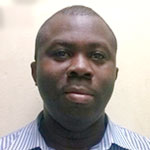
Biography:
Osunsanmi Foluso Oluwagbemiga is a senior biochemist with over fifteen years work experiences in both industrial and academic sectors. He is currently a researcher in the department of Biochemistry and microbiology, University of Zululand, South Africa. He specializes on natural product synthesis in the treatment of various diseases. He has completed his PhD works and at the edge of submitting his thesis. Notable publications have been accredited to him in reputable journals. He is a member of South Africa Association of Clinical Biochemistry and National Association of Safety professional.
Abstract:
Platelet dysfunctions are implicated in cardiovascular diseases. Management of abnormal Platelet aggregations with natural products is a promising approach to the treatment of cardiovascular diseases. In this study, betulinic acid (BA) and its acetyl derivative (3-β acetylbetulinic acid) (BAA) from Melaleuca bracteata var. revolution gold were investigated for their antiplatelet aggregation and cytotoxicity. BA was isolated from Melaleuca bracetata by column chromatography and some portion of BA were used to synthesize BAA. The antiplatelet aggregation activity of the compounds was separately evaluated on collagen, ADP, thrombin and epinephrine to induce rat platelet aggregations. The MTT cytotoxicity assay was used to determine the cytotoxic effect of the compounds against human embryonic kidney (HEK293) and hepatocellular carcinoma (HEPG2) cell lines. BA and BAA exhibited significant (p<0.05) dose dependent antiplatelet aggregation activity. BA and BAA showed the highest platelet aggregation inhibition on epinephrine induced platelet aggregation with IC50 values 0.78 mg/ml and 0.85 mg/ml respectively. BA and BAA showed less cytotoxicity effect on both HEK293 cell (IC50 1027 µg/ml and 1051 µg/ml respectively) and HEPG2 cells (IC50 448 mg/ml and 672 mg/ml respectively). The results suggest that the compounds could serve as template for synthesis of new antiplatelet drugs Platelets.
Babatunji Emmanuel Oyinloye
University of Zululand, South Africa
Title: The modulatory effect of methanol extract of Piper guineense in CCl4-induced hepatotoxicity in male rats
Time : 12:40-13:00

Biography:
Babatunji Emmanuel OYINLOYE is a Lecturer in the Department of Biochemistry, Afe Babalola University, Ado-Ekiti, Nigeria. He has published numerous papers in reputed journals and has been serving as a review member of repute journals. He is currently rounding up his Doctoral degree in Biochemistry in the University of Zululand, South Africa. He has professional membership of Nigerian Society of Biochemistry and Molecular Biology, South African Society of Biochemistry and Molecular Biology and Society of Biology, London. Over the years, his research has centred on the evaluation and assessment of medicinal plant used in the traditional treatment of metabolic diseases, with special interest in rational drug discovery and development of nutraceuticals.
Abstract:
The aim of this study was focused on investigating the possible protective effect of Piper guineense against CCl4-induced hepatotoxicity in animal-model. Thirty male Wistar-albino rats were divided into five groups as follows: control, CCl4, pre-treatment, post-treatment and standard drug. Hepatotoxicity was induced by administering oral dose of CCl4 (1.2 g/kg bw) 3 times a week for 3 weeks. In the modulatory experiment, Piper guineense (PG), (400 mg/kg bw) was administered by oral gavage for 14 days prior to the administration of CCl4 and simultaneously with CCl4 in the pre-treatment group; PG (400 mg/kg bw) was administered simultaneously with CCl4 in the post-treatment group while Livolin forte (20 mg/kg bw) was administered simultaneously with CCl4 in the standard drug group. Administration of CCl4 induces histopathological alteration in the liver with concomitant increased activities of serum hepatic marker enzymes associated with increased level of lipid peroxidation. Similarly, there was decrease in non-enzymatic (reduced glutathione; GSH) and enzymatic antioxidants (glutathione S-transferase; GST), superoxide dismutase (SOD) and catalase; CAT). Elevation in serum triglyceride (TG) and total cholesterol (TC) levels was noticed along with decreased level of serum total protein (TP). Treatment with PG 400 mg/kg bw exhibited excellent modulatory activity with respect to the different parameters studied by reversing all the above-mentioned biochemical changes significantly in all experimental animals. These results suggest that PG offered protection comparable to that of Livolin forte with better efficacy when pre-treated with 400 mg/kg bw 14 days prior to CCl4-exposure.
Mohammad Zashim Uddin
University of Dhaka, Bangladesh
Title: Ethnomedicinal study and consensus among the informants for the uses of medicinal plants of feni
Time : 14:00-14:20

Biography:
Mohammad Zashim Uddin obtained Ph. D. at the age of 32 years and trained from USA on tropical biodiversity. His current position is Professor in the University of Dhaka and supervised 25 M.S. research students and presently guiding one Ph. D student. By this time, he published 56 research articles in different scientific journals. Recipient of numerous awards and grants, Dr. Zashim has participated at least 41 events of training program/ workshop/ international conference. He served as biodiversity expert in 20 research projects here in Bangladesh. His current research focuses are on threatened ethnomedicinal plants and conservation of forest biodiversity.
Abstract:
Ethno-medicinal study was conducted to identify and document plant species used for treatment of various ailments and to find out the level of consensus among informants regarding the uses of plants for particular disease categories. Information has been gathered between January to December 2014 from 65 informants using semi-structured interviews. The reported plants were collected, identified and preserved. The study was recorded115 medicinal plant species with 216 formularies to treat 69 ailments. These species belongs to 55 families. Such data indicated that the study area has plenty of medicinal plants with their diversity of health care uses. Ailment category cut and wounds attained the highest Fic value. Species used for this purpose are Mikania cordata, and Cynodon dactylon which were cited by many informants. Second highest Fic value was found in case of Dysentery and diarrhoea. Medicinal plants used for this purpose are Litsea glutinosa, Dalbergia sissu, Mangifera indica, Scoparia dulcis, Holarrhena antidysenterica, Stephania harnandifolia and Centella asiatica those were cited by a good number of informants. Since the Fic values attained highest, such plants could be recommended for further phytochemical study to isolate compounds. In our survey, 16 species has attained 100% Fl values. This Fl values means that the informants have a tendency to rely on one specific plant species for treating one certain ailment than several ailments. The study asserted that such species need to be protected in the study area to sustain traditional medicinal plants and culture.
Nguyen Thi Trieu
Physician, Vietnam
Title: Tenofovir Disoproxil Fumarat , Herbal Medicaments, Vitamin C Treatment on HBeAg Positive or HBeAg Negative in Chronic Hepatitis B (HBV)
Time : 14:20-14:40

Biography:
Physicians Trần Minh Äức & Nguyá»…n Thị Triệu from Vietnam, they are pursuing a combination of natural herbal and medicinal artificially to create a new breakthrough towards helping improve the quality of life. They are rediscovering nature and nurture as safer in treatment, cost effective health and healing resources
Abstract:
Phyllanthus Cantoniensis Hornem - Herba Adenosmatis Caerulei - Herba Eclipta - Vitamin C combination plus Tenofovir in treatment of acute and chronic hepatitis B. Method the combination of drugs derived from natural and artificial medicaments. Has stronger effect on immune system, effective good against HBV replication. This is a substantial new insight into the pathogenesis of disease, with a clear path toward clinical application, or which would lead to a substantial advance and perfect in management or public health policy. Triple
Benjamin Opawale
Rufus Giwa Polytechnic, Nigeria
Title: Evaluation of antimicrobial, antioxidant and cytotoxic activity of lovoa trichiliodes extracts and essential oils
Time : 14:40-15:00

Biography:
Benjamin Opawale is a Ph.D. student at the Microbiology department of Federal University of Technology, Akure, Nigeria. He lectures at the Department of Science Laboratory Technology, Rufus Giwa Polytechnic, Owo, Nigeria, and has served at various academic and administrative positions positively in the last twenty years. He currently holds the position of Dean of students in the institution. His recent research interest is in the area of medicinal plants used as folkloric remedies and has published more than 15 papers in reputable Journals. He is a member of Nigerian Institute of Science Laboratory Technology and American Society for Microbiology respectively. He is happily married with children.
Abstract:
Evaluation of Antimicrobial, Antioxidant and Cytotoxic Activity of Lovoa trichiliodes Extracts and Essential Oils: Lovoa trichiliodes is a medicinal plant used in many African countries by traditional practitioners for the treatment of some infectious diseases. The extracts and essential oils of Lovoa trichiliodes were investigated for their antioxidant, antimicrobial and cytotoxic properties using standard techniques. The DPPH scavenging activities ranged from 05.33±0.88% at 0.05mg/ml of leaf to 88.14±0.03% at 2.0mg/ml of stem bark essential oils respectively. The IC50 of the stem bark oil (0.81±0.15) and that of the leaf oil (1.52±0.03) were significantly (p≤0.05) higher than that of ascorbic acid (0.40±0.15) used as control. The antimicrobial assay of the samples revealed a high activity against the test pathogens at 50mg/ml for extracts and 50µg/ml for oil respectively. The leaf extract showed lower level of activity than the stem bark extract against the test organisms compared to the controls. The essential oils from both the leaf and stem bark exhibited higher activities against bacteria than fungi. Bacillus subtilis showed the highest susceptibility to the extracts while Pseudomonas aeruginosa exhibited the least susceptibility to the plant materials. The minimum inhibitory concentration and minimum bactericidal/fungicidal concentration ranged from 2.5 to >200mg/ml and 5 to 200mg/ml for the extracts while that of oils ranged from 3 to 40µg/ml and 5 to 75µg/ml respectively. However, water extract of the plant’s stem bark showed no activity against any of the test organisms. All the extracts and essential oils showed high level of lethality on brine shrimp larva with LC50 ranging from 0.71 to 56.13ppm. These results confirm the basis for the use of this plant in traditional medicine as remedy against several diseases.
Adewale Adetutu
Ladoke Akintola University of Technology, Nigeria
Title: Anti-malaria Activities of Selected Plants and Gas Chromatography-Mass Spectrometer Chemical Profiling of Aqueous Bark Extract of Prosopis africana (Guill &Perr)
Biography:
Adewale Adetutu studied PhD, MSc and BSc in Biochemistry at University of East London, London, United Kingdom and University of Ibadan, Nigeria, respectively. He is currently researching at Ladoke Akintola University of Technology Ogbomoso, Nigeria.
Abstract:
Background: The development of resistance to currently known conventional anti-malaria drugs has necessitated search into more potent and less toxic anti-malaria drugs of plant origin. Objective: Hence, this study aimed to document plants commonly used to treat malaria in Ilorin metropolis, Nigeria and validate the traditional claims using in vivo anti-plasmodial tests. Methods: Semi-structured questionnaires (70) were used to explore the ethno-botanical practices amongst the traditional healers. The most common species cited were identified, authenticated and their aqueous extracts were screened for antimalarial activities using Plasmodium berghei (NK 65 chloroquine sensitive) and chloroquine as the malarial parasite and positive control respectively. For in vivo anti-plasmodial testing, the mice were infected with 1×107 parasitized erythrocytes and plant extracts were subsequently administered orally for suppressive, prophylaxis and curative assays. Percentage parasitemia was estimated by standard microscopy and haematological parameters were also measured using standard analyser. Results: Seventy traditional healers from Ilorin metropolis, Nigeria were involved in the study. Forty-three species were recorded with their local names and parts used in the traditional therapeutic preparations. Ten plants with highest frequency of citation (Cymbopogon citrates (17.1%), Azadirachta indica (12.9%), Prosopis africana (12.9%), Vernonia amygdalina (11.4%), Khaya grandifoliola (10%), Terminalia glaucescens (10%), Ziniber officeinale (7.1%), Citrus paradise (7.1%), Parquetina nigrescens (7.1%), Psidium guajava (7.1%),) were selected and investigated for anti-malaria activities. The aqueous extracts of all the selected plants showed significant (p<0.05) anti-malaria activities. P. africana bark extract at 200 mg/kg body weight had the highest chemo-suppressive effect (90.02%) in comparison with other plant extracts and the standard, chloroquine (61.70%) on the 8th day. In addition, the maximum Mean Survival Time (MST) of 23 days was observed in animals administered with P. africana and chloroquine. The extract of P. africana was further analysed for possible bioactive components using Gas Chromatography-Mass Spectrometer (GC-MS). The GC-MS analysis revealed that the aqueous bark extract of P. africana contained lipid (eight), phytochemical (sixteen) and essential oil (eighteen) components. The histological analysis of the liver revealed that the extract of P. africana was able to protect the liver against B. bergei induced damages. Conclusion: Most of the species tested had some antiplasmodial effects, which to some extent supports their traditional inclusion in herbal preparations for treatment of malaria. The bioactive components identified may be responsible for the observed antimalarial activity of P. Africana extract.
Remirez Figueredo Diadelis
Reviewer at the Cuba Regulatory Agency, Cuba
Title: Regulatory frame work and quality control of medicinal plants.
Time : 03:00-03:20

Biography:
D. Figueredo received her B.A. degree (1995, Biochemistry) from Faculty of Biology, Havana University, Cuba, and both her MSc (1995, Biomedicine) and PhD (1999 Pharmaceutical Sciences) degree from National Center for Scientific Research in Havana, and most of the results were done in the Department of Toxicology at the Free University in Amsterdam. Postdoctoral training in Molecular Toxicology and pharmacology was completed at the Faculty of Pharmacy in Toronto, Canada. She has been referee of scientific journals related with natural products. Other previous academic appointments include lecturer in different international meeting. She has been the recipient of National Award of Pharmacology twice from the Cuban Pharmacology Society. She worked as Expert for the evaluation of preclinical platform in South Africa. (CSIR). She is currently the Vice president of Cuban Pharmacology Society. She is the WHO focal point for traditional medicine in Cuba. At present she works in the Cuba Regulatory Agency, she is one of the reviewers for authorization of clinical trials, and the evaluation of safety and efficacy of drugs (synthetic and natural products) for registering. She is the project leader for Pharmacogenetic guideline. Dr. Remirez research is described in over 30 published research reports
Abstract:
In the last decade there has been a global upsurge in the use of traditional medicine and complementary and alternative medicine in both developed and developing countries. This is one of the main reasons for reinforcing the surveillance of the safety, efficacy and quality control of traditional medicine, complementary and alternative medicines. This work describes important aspects about the art state of the regulatory status of herbal medicines. Besides that, data related with the countries involved in the World Health Organization (WHO) program for traditional medicine will be showed. Another important aspect is, the importance of clinical trials in order to guarantee the safety, quality and efficacy of Natural Health Product, the main mistakes in Clinical Trials of natural products are explained. The market and the main challenges are analysed in the investigation of the phytomedicines as well as the tendencies in the growth of this attractive sector. The WHO strategy for the development of herbal medicinal product is also showed. The regulatory framework of traditional medicine in Cuba will be presented as well as the implementation of WHO strategy. In conclusion, Drug Regulatory Authorities should ensure the quality, safety and efficacy of traditional medicines.

Biography:
Ian Feguson Hamilton has been teaching and in homeopathic practice since 1989 with successful practices in all parts of the UK. He was editor of The Homeopath for nearly 5 years and is the Founder of the Art and Homeopathy Group.
Abstract:
A homeopath, to be able to perceive this totality of symptoms, has to be patient, gentle, tolerant and forbearing and this is where art comes in. He must observe and perceive more particularly, the symptoms that the patient unknowingly tries to conceal, because he cannot relate or has no knowledge of how homeopathy works. Altered states like actions, sensations, emotions, behaviors and feelings that the patient would not normally have in healthy state, are the true evidence of diseaseâ€. Samuel Hahnemann, Organon of the Medical Art My work with a variety of patients and working with members of the group has shown that, in addition to the accepted methods of case taking and anamnesis, the focus on the patients’ artistic expression reveals the altered states as evidence of disease, which Hahnemann refers to. This is based on the notion that most case taking produces what I refer to as the Archetypal state. This is often the basis of a partially curative prescription. The truly curative prescription arises from the deep hidden language of expression – their passion - which the patient often unknowingly conceals. I will be presenting illustrative cases as evidence of this remarkable thesis, showing true deep healing of a variety of physical and emotional disorders, in a series of follow ups. A variety of artistic expressions will be evident as the range of the method.
Carla Rose Kelly
Healer at Sacred Scale, Canada
Title: Sacred scale for healing, ascension & improvisation

Biography:
Carla Rose Kelly, life-long musician, multi-instrumentalist, award winning pianist, composer, recording artist, Master Healer with Music, has 3 post-secondary degrees, Royal Conservatory piano & theory teacher 25 years, 10 years vocalist with Conservatory Canada. Carla Rose is inventor of Sacred Scale musical instruments and Sacred Scale Music Education Program and is pioneer and sole researcher in the world of the healing effects of Sacred Scale. She facilitates internationally at the IAMM, ISQRMM and Music Therapy Conferences sharing the substantial results of her quantitative research. This work is published in the 2014 ISQRMM Journal. Carla Rose teaches in Japan, Australia, Canada and US. Her passion is healing with music.
Abstract:
The Sacred Scale is a new musical scale specially designed on Sacred Scale Musical Instruments. It is 9 specific frequencies all in tune with the laws of nature, all in tune with the human body. These innovative musical instruments are specifically designed for healing, ascension or improvisation. An introduction to the methodology for using the Sacred Scale for healing, ascension and improvisation will be presented. As well, participants will be offered a sample Sacred Scale session to experience what happens in the mind, body and soul from exposure to the music. Discussion and question period will follow. Participants will receive a handout explaining the study results as well as the history of the Sacred Scale.
Hans Schaeffler
Institute for Ayurveda, Austria
Title: The art of healing in Ayurveda compared with the traditional healing methods of the Maori from NLZ

Biography:
Hans Schaeffler studied human medicine in Munich. He is a general practitioner, educated in Naturopathy and a specialist in ayurvedic medicine. As early as 1984 he founded the first Ayurveda Health Center in Germany. In 1993 he moved to Austria and founded an Ayurvedic Health Center in the 5 Star Hotel Schloss Pichlarn. His activities in lecturing and publishing articles and papers helped to make Ayurveda popular in German speaking countries. He is a meditation teacher and in addition to Ayurveda he also studied other traditional methods of healing.
Abstract:
Ayurveda is normally known as a set of text-books displaying the approach to diagnosis and treatment of the ancient Indian civilization. But the origin and the heart of Ayurveda is not found in books. It is the inner connection with the field of healing, the field of pure energy. This universal field of healing unfolds itself in terms of five elements these elements can be considered as threshold forces which connect the realm of energy with the expressed world. We have to assume that the founding fathers of Ayurveda, living as Rishis (recluse) in the depths of the forests, experienced the elements as animated. In this way they could contact the elemental forces for the purpose of healing. Evidence for this idea is found in the Veda. Many hymns of the Veda are invocations of elemental forces. Interesting enough, we find a similar approach in the tradition of indigenous people who practice the connection with the forces of nature to the present day. Against this background it is interesting to see, that Ayurveda in its essence has a similar basis as the traditional healing methods of the Maori.
Mindy Green
Western Herbalist, Aromatherapy, Esthetician, USA
Title: Aromatic medicines in integrative care

Biography:
Mindy Green has 35 years of experience in the botanicals industry. She is a nationally certified Registered Aromatherapist and has served on the education committees of the National Association of Holistic Aromatherapists and the Aromatherapy Registration Council. Mindy has authored three books and over 60 published articles on botanical therapies and health. An active educator and lecturer, Mindy is an ongoing presenter at the Center for Integrative Medicine at the University of Arizona. As a consultant and speaker she specializes in botanical therapies and value-added aromatherapy. She is a founding and professional member of the American Herbalists Guild, a graduate of Purdue University’s Advanced Uses of Essential Oils program, and is on the advisory board for the American Botanical Council, publisher of HerbalGram magazine. Mindy worked in the botanical research division of Aveda’s R & D department as their clinical aromatherapist (2003 – 2009). Her consulting company is Green Scentsations, LLC.
Abstract:
Aromatic plants (herbs and essential oils) have been used throughout history for healing, whether through pharmacy, cosmetic care, or spiritual practices. Modern science confirms that the chemical constituents found in essential oils have tremendous benefits, and are being used in medical systems abroad with wide ranging therapies from primary to palliative care, while the US falls behind in this innovative and science based modality. This lecture will focus on essential oil safety, dilution, application, and external uses. We will discuss the implications of olfaction in de-stressing, and provide material medica for ten functional essences derived from plants. Seeing the research and examples of how the rest of the world is employing them in integrative care is sure to provide a more thorough understanding of their benefits and the confidence to incorporate them safely and effectively into your personal life and professional practice.
Michael D. Seidman
Henry Ford Health System, USA
Title: Complementary and Integrative Medicine (CIM)
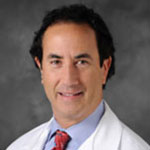
Biography:
Michael D. Seidman, MD attained both his B.S. in Human Nutrition and M.D. from the University of Michigan. After a five-year residency in Otolaryngology-Head and Neck Surgery at Henry Ford Health System (HFHS) he completed a fellowship in Otologic/Neurotologic and Skull Base Surgery at the Ear Research Foundation in Florida. Seidman is the Director-Division of Otologic/Neurotologic Surgery in the Department of Otolaryngology-Head and Neck Surgery for HFHS, Past Director of Otolaryngology Research Laboratory, the Co-Director of the Tinnitus Center, the Chair of the Center for Integrative Medicine for HFHS, Director of Product Development (nutritional science/projects) for ViSalus Sciences, a past President of the Michigan Otolaryngology Society, and was elected in 2009 to be the next Chair of the Board of Governors for the American Academy of Otolaryngology Head and Neck Surgery. has more than 80 major publications; a book published by Time Warner “Save Your Hearing Now†numerous awards including being honored as one of the top Doctors in the USA. He has been interviewed on Good Morning America, CNN and other national news venues and has been quoted nationally and internationally in such magazines as “Oâ€, “Shapeâ€, Women’s World, Men’s Health, The Wall Street Journal, New York and the London Times Seidman is also a Co-Editor for the International Tinnitus Journal, the Associate Editor for Otolaryngology-Head and Neck Surgery journal and is on the Editorial Review Board for seven major Otolaryngology Journals and the American Journal of Chinese Medicine
Abstract:
Our existing paradigm of “health care†is nothing more than “sick careâ€. Providing a more holistic and preventive approach is challenging but something we must implement. The CDC estimates that 2/3rds to 3/4ths of all medical disorders are preventable. In 2013 “sick care†spending is estimated to approach 2.7 trillion dollars and consume 18% of the gross domestic product. This is unsustainable, and an approach that we have implemented at Henry Ford Health System; our wellness initiatives are designed to target many health care issues with the goal of preventing disease, improve outcomes and reduce health care expenditures. Some of these strategies involve Complementary and Integrative Medicine (CIM). “The best care is likely to emerge from a skillful blend of best evidence with caring, humility, and behavior that engenders a placebo response"(Rich Rosenfeld). The power of the body to heal itself is grossly underutilized in medicine today; the best physicians understand this and find ways to facilitate this healing. Physicians must learn about CIM. This course will provide the attendee with an important understanding of the powers of CIM; the pro’s the con’s what is safe and effective and how to appropriately offer these techniques to our patients.
Adama Ly
Université Paris XI and Afrocancer, France
Title: Cancer and alternative therapies in Africa

Biography:
Adama Ly is the President - Founder of AFROCANCER and Editor in Chief of the revue “Journal African du Cancer / African Journal of Cancer†published by Springer. Doctor in Immunology and Oncology at University Paris XI (Villejuif, France). He received a Master 2 in Biomedical Engineering and Innovations Management (Pierre and Marie Curie University, Paris, France). He is a visiting fellow at Sydney Kimmel Cancer Center, San Diego, USA) and at Martin Luther Wittenberg University (Halle, Germany). He is Member of many professional societies and scientific boards; he has published several articles and books in antitumor AL immunity and cancer cellular therapies.
Abstract:
Cancer is a leading cause of death worldwide. The spread of the disease impacts less developed countries that endure a large part of the burden. Infrastructures, human resources and affordable medicines are crucial needs to tackle the inevitability of death by cancer in Sub-Saharan populations. Herbal medicines and natural products remain alternative therapeutics. As a matter of fact, health professionals must explore these natural drugs with traditional healers help to secure and control the self-medication. In the meantime, it’s the best way to exploiting the traditional knowledge for new drugs discovery and to enhance the African capacities in drug screening. This scientific and sociologic approach will be presented
Olugbenga Morebise
All Saints University School of Medicine, Dominica
Title: Dominican medicinal plants—uses, chemical constituents, bioactivity reports and prospects
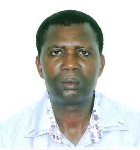
Biography:
Olugbenga Morebise obtained a PhD degree in Biochemistry from the University of Ibadan, Ibadan, Nigeria. He has been involved in both teaching and research in Nigeria before moving to the Caribbean. He currently teaches Biochemistry at the All Saints University School of Medicine, Roseau, Dominica. He has done research work on bioactivities of medicinal plants, including anti-inflammatory, analgesic, antimicrobial, anti-diabetic and allelopathic activities. He has published many articles in reputable journals. He currently hopes to team up with his colleagues to establish a phytochemical/ herbal research unit in Dominica.
Abstract:
The Commonwealth of Dominica is blessed with a lot of green plants, many of which are used for medicinal purposes, including treatments for coughs, asthma, bronchitis, tuberculosis, sore throat, diabetes mellitus, hypertension, fevers, erectile dysfunction, skin disorders, cancers, indigestion, dysentery, dysmenorrhea, worm infestation, obesity, vomiting and a host of other disorders. Bush tea is a common term in Dominica and it refers to the decoction, concoction or infusion made from the medicinal plants. This presentation shows how the popular medicinal plants are usually used by the locals in Dominica and their strong folkloric beliefs on the efficacies of the herbals. The chemical composition of the plants and bioactivity reports on them, based on research finding from different parts of the world, are also presented in this report. Some of the plants still have few or no phytochemical and bioactivity reports on them, indicating ideal areas for novel researches. Future prospects and recommendations in the areas of novel herbal formulations, drug discovery and medicinal plant research in Dominica are also highlighted.
Sherif R. Abdel-Aal
National Organization for Drug Control and Research, Egypt
Title: Phytochemical study and biological activity of leaves and flowers of ipomoea carnea j. grown in egypt
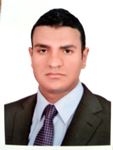
Biography:
Sherif Reda Abdel-All Ali has completed his B.SC.in Pharmaceutical sciences at the age of 22 years from October 6 University and registered for master degree in Pharmacognosy at Faculty of Pharmacy Helwan University. At present he is working as a drug quality control specialist at phytochemistry laboratory (Medicinal Plant and Herbal Drugs department) at National Organization for Drug Control and Research (NODCAR EGYPT).
Abstract:
Ipomoea carnea was recorded along canals, drains, road sides, railways, waste lands and fluid edges in the Nile Delta. GC/MS was used for qualitative and quantitative analyses of lipoidal content of the leaves and flowers of I. carnea. 32 Components representing 83.548 % were identified in the fatty acid methyl esters of the leaves of I. carnea while 23 components representing 84.424 % were identified in the fatty acid methyl esters of the flowers. On the other hand, 22 components were identified in the unsaponifiable matter of the leaves representing 83.398 %, while 25 components were identified in the unsaponifiable matter of the flowers representing 91.069 %. HPLC was used for assay of rutin in leaves and flowers ethanol extract of I. carnea. The leaves ethanol extract showed higher concentration of rutin (8.85 mg/g dry wt) than flower ethanol extract (2.72 mg/g dry wt). The total phenolic compounds, the in-vitro and in-vivo antioxidant properties and the antimicrobial activity against gram-positive and gram-negative bacteria, fungi and their minimum inhibitory concentration (MIC) were evaluated. The results showed that the ethanol extract of flower contained higher phenolic compounds than ethanol extract of leaves (9.331and 6.6348 mg (GAE)/g dry wt, respectively). The ethanol extract of leaves possessed higher DPPH radical scavenging activity than ethanol extract of flowers (IC50 = 1.608 and 4.861 mg/ml respectively). The flowers ethanol extract showed higher antibacterial activity in comparison with gentamicin and ampicillin against Eschirechia coli, Streptococcus pneumonia and Bacillis subtilis with MIC values (3.9 µg/ ml, 3.9µg/ ml and 0.98 µg/ ml) respectively. The leaves ethanol extract showed mild potent antifungal activity compared with amphotericin B against Aspergillus fumigatus with MIC value (7.81 µg/ ml). The extracts were tested for cytotoxic activity against liver, breast and colon carcinoma cell lines; leaves extract showed potent cytotoxic activity against breast carcinoma cell lines (IC50=7.4 µg/ml) while it showed mild cytotoxic effect on liver and colon carcinoma cell lines (IC50=23 and 35 µg/ml respectively) comparing to doxorubicin while the flower extract showed only cytotoxic activity against breast carcinoma cell lines (IC50=44.2 µg/ml).
Tonyelle R. Russell
President at International Naturopathic Medical Association, USA
Title: A comparison of the anti-Staphylococcus aureus activity of extracts from commonly used medicinal plants

Biography:
Tonyelle R. Russell is a Naturopathic Medical Doctor: President of the International Naturopathic Medical Association.
Abstract:
Resurgences of Staphylococcus aureus infection continue globally, with antibiotic resistance increasing dramatically, making these infections more difficult to treat. S. aureus epidemics impose public health threats and economic burdens on health care costs worldwide, presenting challenges modern medicine struggles to control. In order to answer today's call for effective treatments against S. aureus, we evaluated and compared various botanical extracts that have historically been suggested as useful for their antimicrobial properties against S. aureus. Briefly, S. aureus cultures were treated with selected botanical extracts and the minimum inhibitory concentration (MIC) determined. In addition, to obtain more quantitative measures on bacterial growth, 24-hour growth studies were done to examine the temporal activity and stability of various botanicals on bacterial replication. The antimicrobial activity observed for the botanical extracts used in this comparative evaluation of efficacy included both bacteriostatic and bacteriocidal activity against S. aureus. Highly effective botanicals including Salvia officinalis, Eucalyptus globulus, Coleus forskohlii, Coptis chinensis, Turnera diffusa, and Larrea tridentata exhibited MIC values ranging from 60 to 300 μg/mL and a 10(6)-fold reduction in bacterial replication. Arctostaphylos uva-ursi and Allium sativum were slightly less effective, exhibiting MIC values ranging from 90 to 400 μg/mL and a 10(5)-fold reduction, while Anemopsis californica gave MIC value of 360 μg/mL and a 10(4)-fold reduction in bacterial replication. Many botanicals, especially at lower doses, had an initial inhibitory effect followed by a recovery in bacterial replication. Such botanicals included E. globulus, C. chinensis, T. diffusa, A. californica, and Berberis vulgaris.Our data demonstrate that S. officinalis, E. globulus, C. forskohlii, A. uva-ursi, C. chinensis, T. diffusa, A. californica, A. sativum, and L. tridentata all show promising direct antimicrobial activity against S. aureus. For many of these botanicals, strong bacteriocidal activity was observed at higher concentrations, but even at lower concentrations, bacteriostatic activity was evident. Other botanicals including B. vulgaris, Baptisia tinctoria, and Glycyrrhiza glabra showed moderate activity against S. aureus, while Schisandra chinensis, Echinacea angustifolia, and Polygonum multiflorum were shown to be ineffective.
Jade Hatfield
National College of Natural Medicine, USA
Title: The treatment of Lyme disease using botanical medicine and essential oil extracts
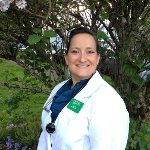
Biography:
Jade Hatfield is a recent graduate from the National College of Natural Medicine in Portland, Oregon. She received her Doctorates in Naturopathic Medicine, as well as a Masters of Science in Integrative Medical Research. She had spent the past 10 years researching integrative plant therapies in the treatment of Chronic Lyme disease and its residing co-infections.
Abstract:
Borellia burgdorfi, a spirochete microorganism, is the infectious agent of Lyme disease, the number one growing insect vector disease in the United States. B.burgdorfi, when transmitted into the human host via a tick, also travels with many other co-infections. Current research shows there are five common co-infections that are transmitted alongside B.burgdorfi; Babesia, Erhlicia, Mycoplasmas, and Anaplasmas. The treatments of Lyme disease and co-infections have shown growing results using botanical medicine, as well as essential oils. When an organism attaches itself to the cell receptor of a normally healthy cell, it signals the releases a cytokines, important for intercellular communications in the body. The cytokine is a signal telling the immune system what is happening and what that cell needs. The immune system responds sending specific cells to that part of the body. The co-infections and B.burgderfori utilize this process to enable their successful infection of the body. Instead of waiting for the immune system to respond to them, they do it as soon as they enter the blood of the host, facilitating its spread throughout the body and sequestration inside the human cells. When understanding the invasion of the immune system via these microorganisms, botanical medicine can be used to modulate the damage, weakening the microbes, increasing the immune system and in turn creating an environment within the body that the organisms can no longer survive.
Hemant Sood
Jaypee University of Information Technology, India
Title: Production of high value medicinal herbs raw material as an enterprise among high altitude communities of north-western himalayas

Biography:
Hemant Sood has done PhD on Medicinal Plant Biotechnology in 2009 from the Jaypee University of Information Technology, Waknaghat, Solan, INDIA and joined as a faculty at the same University in 2009. She has been awarded a prestigious Young Scientist Award of the INDIAN SCIENCE CONGRESS ASSOCIATION Conferred by Nobel Laureate Prof. Venkatraman Ramakrishnan, in 2012 on her contributions in developing cell culture technologies for high altitude medicinal herbs. She has published in journals of repute and has presented papers in prestigious international conferences some of which have been awarded as best poster awards. She has filed/published 6 patents on her research outcome. Her research on medicinal herbs has been funded by various funding agencies such as DBT, DST, DRDO, and MEF of the Govt. of India.
Abstract:
The Indian Himalayan Region (IHR) covering approximately 4, 19,873 km2 areas, supports natural, unique and socio-economically important floristic diversity due to unique topography, diverse habitats and large altitudinal range (200-8,000m amsl). Among several medicinal herbs, the four species, Swertia chirayiata, Dactylorhiza hatagirea, Gentiana kurrooa and Picrorhiza kurrooa have been extensively used in the preparation of various herbal drug formulations. Due to over exploitation and habitat degradation, the populations of these medicinal herbs are depleting at an unprecedented rate and as a result have been declared as endangered. The imposition of legal restrictions on the collection of raw material from natural habitats has caused not only economic constraints on the local communities but also resulted in shortage of quality raw material for pharmaceutical and herbal drug industries. This has led to illegal procurement and adulteration of raw material of medicinal herbs, not only affecting the livelihood of local farmers but also resulting in adulteration of herbal drugs. We have developed tissue culture technologies for large-scale production of quality planting material for these herbs. The plant material is checked for the desired amounts of marker compounds and genetic purity through molecular markers before transferred to local communities for transplantation and adoption of technologies. The production of quality plant material is expected to go a long way in not only reclaiming the natural habitats of medicinal herbs but also creating avenues for enterprise development in high altitudes of Himalayas.
Kishan C. Gupta
Anand College of pharmacy, India
Title: Therapeutic applications of essential oils and their constituents

Biography:
Former Director Anand College of Pharmacy, Keetham Agra (UP) India, Professor & Head, G.B.P.U.A.T, Pantnagar,Uttrakhand
Abstract:
Essential oils are odorless, highly volatile, secondary metabolites widely recognized as green therapeutic medicaments for treatment of different ailments. They are known for their therapeutic properties as antibacterial agents against a wide spectrum of pathogenic strains due to the presence of Phenolic components such as Thymol, Carvacrol, Eugenol, etc. which inhibits gram positive pathogenic bacteria more than gram negative pathogenic bacteria. Essential oils also show bactericidal like activity against oral and dental pathogens, used for treatment of herpes infections. Garlic oil showed hypo lipidemic action. Beside these essential oils have also been screened for hypotensive anti diabetic, anti-cancer, antioxidants as well as for cardiovascular, menopausal, skin disorders, leukemia and hepatic disorders.
Shagufta Perveen
King Saud University, Saudi Arabia
Title: Natural remedies from saudi herbs for treatment of certain serious health problems
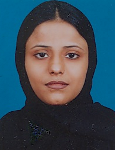
Biography:
Shagufta has completed her Ph.D. at the age of 28 years from HEJ Research Institute of Chemistry, University of Karachi, Pakistan and University of Southampton UK, School of Chemistry. She is an Associate Professor at Department of Pharmacognosy, College of Pharmacy, King Saud University, Saudi Arabia. She has published more than 50 papers in reputed journals and has been serving as an editorial board member of many scientific journals.
Abstract:
Cancers figure among the leading causes of morbidity and mortality worldwide, with approximately 14 million new cases and 8.2 million cancer related deaths in 2012. The deaths from cancer are projected to continuously rise worldwide, with an estimated 13.1 million deaths in 2013. Lung cancer is the second most common cancer in men, the colon and rectum cancers in combination rank third in frequency among males in the United States. Anticancer drugs are used to target all rapidly proliferating cancer cells. Chemotherapy is one of the most important therapeutic options used to treat human cancers, either alone or in combination with radiation therapy and surgery. Although a number of new anti-cancer drugs that target various key processes in cancer progression have been developed, but overall patient survival rates have mostly remained unchanged for a number of years. Hence, the use of natural products has now been looked upon thoughtfully in the control of cancer. Plant derived natural products have received considerable attention in recent years due to the presence of various bioactive compounds and their diverse pharmacological properties including cytotoxic and cancer preventive effects. Among the common fungal infections that affect women in Saudi Arabia, is yeast vaginitis. Research results indicated that 59.6% of yeast vaginitis in women from Saudi Arabia is caused by C. albicans, and 31.6% by C. glabrata. Nowadays, such infections are becoming more drug resistant, hence it would be of much importance to explore new antifungal drugs of natural origin and introduce them to the pharmaceutical industry. The aim of our work is to contribute to the knowledge of the chemical composition of Saudi medicinal flora and validate its ethnomedicinal use, trying to find a scientific justification for the traditional use of these plants. In conclusion, this study led the way to the preparation of safe and efficient herbal drugs that can be used to treat different types of cancers as well as certain fungal infections.
